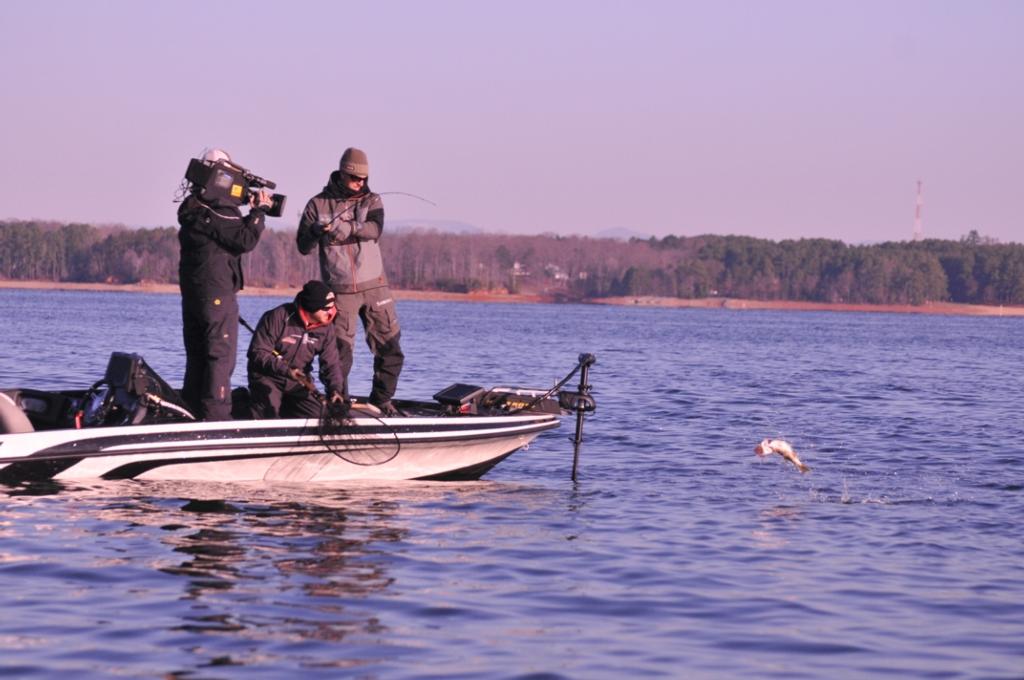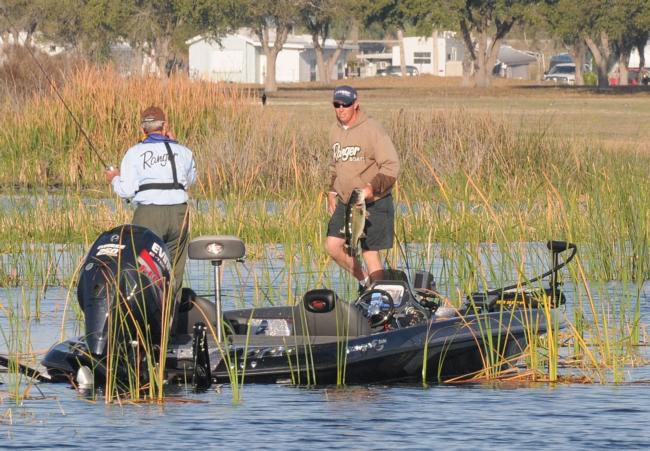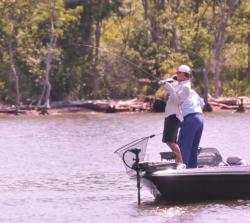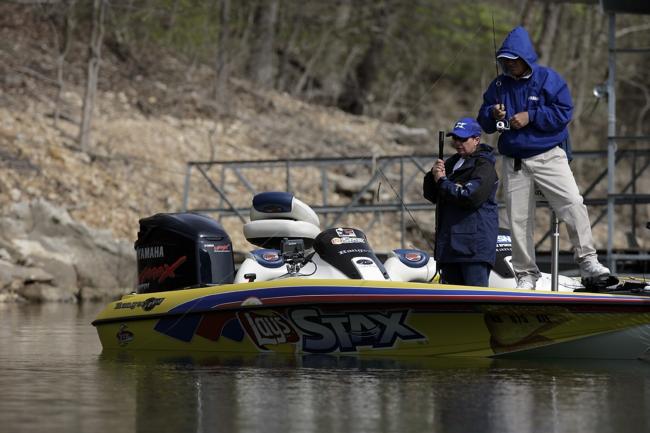Walmart FLW Tour Preview: Part I
Eighteenth season to commence Feb. 7 on Florida’s Lake Okeechobee

With the Walmart FLW Tour season just weeks away, FLWOutdoors.com takes a closer look at the venues that will play host to the top bass anglers in the world. The 2013 schedule features six qualifying events – including two in Alabama and one each in Florida, Arkansas, Oklahoma and Tennessee. Part I of this two-part series features the first three events of the year.
Stop No. 1
Lake Okeechobee
Feb. 7-10
The first FLW Tour stop of the 2013 season will take place on legendary Lake Okeechobee. With the past two years seeing winning tournament weights breaking the century mark, it seems many expect another slugfest of epic proportions. The only difference this year is that Okeechobee is two feet higher than it was for the previous Tour visits.
“This is the highest water I have seen out there in at least the past six years, maybe even longer,” said Ocala, Fla., pro Glenn Browne. “In the last few years we have gone to Okeechobee when the  lake level was around 13 feet. With the lake at that level it forced the fish to group up in certain areas, which meant that anglers would do the same.
lake level was around 13 feet. With the lake at that level it forced the fish to group up in certain areas, which meant that anglers would do the same.
“This year, however, the lake will fish a little bigger. There will still be places that hold bigger concentrations of fish and will attract more guys to it, but there is going to be a few people that find spots away from the crowds in places that don’t see much pressure. It’s going to be an exciting event.”
According to Browne, Okeechobee isn’t fishing as well as it could be right now. The water level and water temperature are a few factors that play into that. Browne also points out that just because the lake isn’t fishing that well doesn’t mean there is a lack of fish being caught – the size just isn’t quite where it should be for this time of year.
“The big females are starting to trickle into the shallows now, but if the weather stays stable and barring no major cold fronts close to the tournament, I think it’s going to be pretty good,” added Browne.
Most of the attention will be on the mats and reeds Okeechobee is known for. It is no surprise that most of the anglers will have a flippin’ stick in their hand with a jig or Texas rig tied on the end. With a new moon arriving at the tail end of the tournament, there could be a new wave of fish moving up to spawn. If that is the case, the sight-fishing bite will come into play. Also, don’t count out horizontal bait presentations such as trap-style baits, buzzing topwaters, swimbaits and maybe even spinnerbaits.
Browne believes that winning weights may not break the 100-pound mark, but instead settle in between 80 and 90 pounds.
Stop No. 2
Smith Lake
March 7-10
The second FLW Tour event is slated for Smith Lake in northern Alabama. Smith last hosted an FLW Tour event in 2008. Since then, the lake has been on a slow, but steady upswing. In addition, the slot limit has been lifted by the Alabama Department of Conservation and Natural Resources. Instead of the usual 15-inch minimum length requirement, 12 inches will be the legal length limit during the four-day tournament. That will translate to a lot of five-bass limits for the 175 pros.
“It should be a pretty good tournament, especially for a clear, rocky impoundment,” said pro Justin Lucas, who now resides in nearby Guntersville, Ala. “We’ve been having a lot of rain in Alabama this winter so the lake should be pretty close to full pool. Overall, Smith is fishing real well right  now, especially compared to previous years. I expect a couple bags of 20 pounds during the tournament and that’s a real good day no matter what lake you’re on.”
now, especially compared to previous years. I expect a couple bags of 20 pounds during the tournament and that’s a real good day no matter what lake you’re on.”
The timing of the event will make the weather in the weeks leading up to the tournament that much more significant.
“If a real strong cold front comes through, spotted bass will dominant the tournament,” Lucas added. “But if it stays warm, it could definitely be won with largemouths. The question will be can the largemouths last four days or not?”
Most people expect Smith to be a prespawn affair, but unseasonably warm weather could bring the first wave to the bank early. That first wave oftentimes harbors the biggest bass in the lake.
“There may be a few fish that come up, but I think 80 or 90 percent of the fish will be prespawn.”
Those that target the spots will be using standard finesse presentations like drop-shots and shaky heads. Those fishing for largemouths will employ jigs, crankbaits, buzzbaits and spinnerbaits. The spotted bass typically live in the deeper, clear water and the largemouths hang out under docks and around lay-downs in the stained water. Umbrella rigs could also play a role, especially if the weather tilts to the cooler side.
Overall, Lucas expects 11 pounds a day will be enough to cash a $10,000 check and 15 pounds per day will likely win the tournament.
“I’ve fished the lake some this winter and there are some really good quality spots in there. And last spring there were some pretty impressive largemouth bags. But a 3 1/2 to 4-pound bite is still huge on Smith.”
Stop No. 3
Beaver Lake
April 11-14
The third qualifier of the season is the annual stop on Arkansas’ Beaver Lake, part of the White River chain. Not only is Beaver similar to Smith in terms of water clarity, but it also has a mix of both largemouths and spotted bass. Moreover, timing and weather will largely dictate what type of tournament it becomes.
“Normal weather should mean a spawning tournament,” said Granbury, Texas, pro Cody Bird. “I imagine there could be a few post-spawners and a lot of cruisers too. It all depends on the weather.”
As the pros can attest, Beaver has been anything but normal the last several years. Two years of high water, one year of frigid temps and last season’s emergence of the Alabama rig has everyone on their toes.
 “That’s the thing I really like about Beaver; it seems like it’s a different lake every year,” added Bird. “My first year on Beaver was 1999. And the lake has seemed to steadily improve every year; there’s more quality fish. It’s not a whole lot better, but it’s definitely better.”
“That’s the thing I really like about Beaver; it seems like it’s a different lake every year,” added Bird. “My first year on Beaver was 1999. And the lake has seemed to steadily improve every year; there’s more quality fish. It’s not a whole lot better, but it’s definitely better.”
Bird, who at one time had a streak of nine consecutive top-20 finishes on Beaver, said he expects some flipping, some crankbaits, spinnerbaits, swimbaits and plenty of shaky-head fishing. The lower end of the lake has clear water and a mix of spots and largemouths. That’s where top-three finishers David Dudley, Andy Morgan and Luke Clausen spent most of their time with the A-rig last year. But those who wish to target largemouths exclusively can run up the river and flip a mix of standing timber and lay-downs.
“It seems like the river is in play now more than ever,” Bird explained. “Jay (Yelas) and Glenn (Browne) went up the river all four days last year and made it work. And that might be even more important this year as the river fish tend to spawn a little bit earlier than the lower-end fish.”
If Bird had it his way, he’d prefer a full-blown sight-fishing tournament, one where the fish are still coming. Under those conditions, he likes to use a 4-inch Kicker Fish Hightail Holeshot finesse worm and a Kicker Kraw Jr.
“That way you can really see who can catch them the best. It’s not a boat race to certain fish marked on waypoints. Over the years I’ve learned how to trigger those first fish that move up and are hard to catch.”
Regardless of the conditions, Bird doesn’t quite expect anyone will match Dudley’s 2012 winning weight of 54 pounds, 7 ounces.
“I think 20 to 22 pounds should be enough to make the cutoff after the first two days and 45 to 50 pounds will win the tournament.”
Related links: